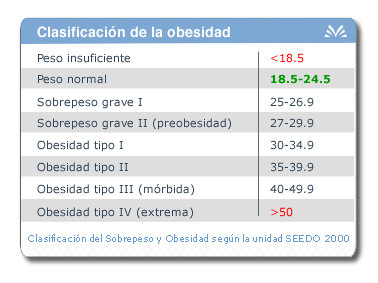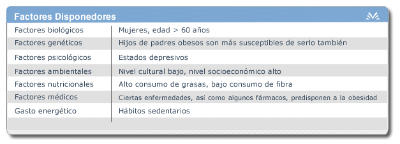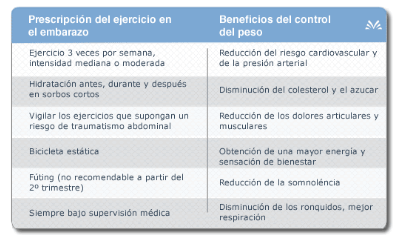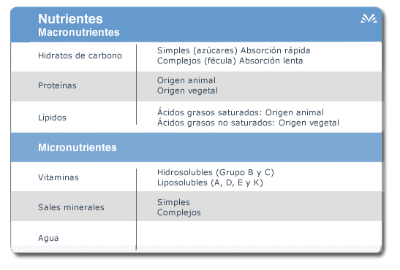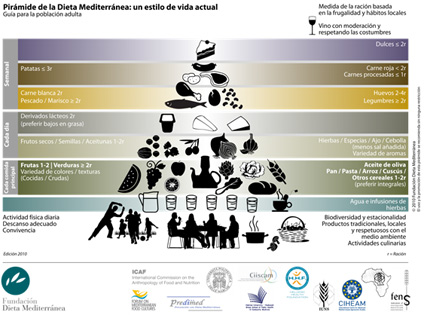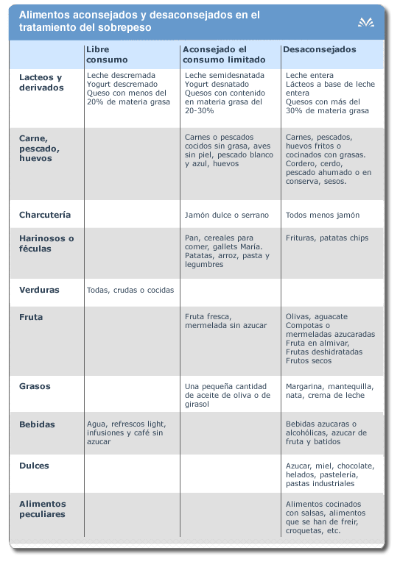Overweight
- Introduction
- Overweight and obesity. Definition
- Target weight
- Diseases associated with obesity
- Prevent obesity
- Balanced diet
- Nutrients
- Energy
- Food pyramid
- Hypocaloric diet. Recommendations
- Modifying eating habits
- Recommended and unrecommended foods when treating overweight
- Hypocaloric diet
- Healthy diets. Basic diet plan and examples
- General rules
- Remember
1. Introduction
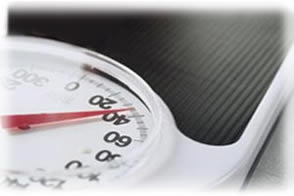
Through the Campaign of health promotion “overweight and obesity”, structured in 16 short chapters of easy reading, give information on basic nutritional concepts.
Do not forget to consult with your family doctor or endocrinologist before starting a certain type of diet.
This campaign requires a time of reading between the 40 and 70 minutes.
With the arrival of the good time, in which leave in the closet the thickest pieces and we use clothes lightest, is when it appears the worry for “wash out of top” those kilillos of more than have been gone accumulating throughout past months… or years.
This is the time when there are numerous miraculous diets to be found in the various media, based on natural products, tablets, etc. And all with the promise of losing weight quickly and without any effort, but with no scientific evidence to back this.
These diets can actually cause severe damage to health and can even be life-threatening.
2. Overweight and obesity. Definition
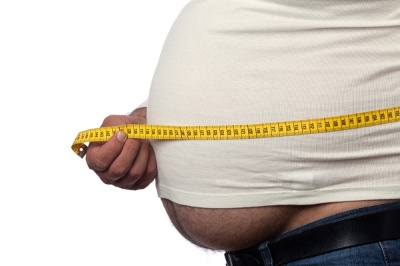
Obesity is a chronic metabolic disorder characterised by the presence of a positive energy balance over time, which leads drives to excess adipose tissue compared with what is considered to be the normal level.
It is not just an aesthetic problem as it constitutes a significant risk factor for health, by increasing the possibility of suffering other diseases such as diabetes, cholesterol, high blood pressure, joint and coronary diseases, etc.
Overweight, unlike obesity, is not a disease, but we must take into account that if it is not controlled, it could lead to obesity.
Prevalence of obesity
Diversos estudios ponen de manifiesto una prevalencia de obesidad en España, para el conjunto de la población entre los 25 y los 60 años, del 13,4% (11,5% en hombres y 15,2% en mujeres)
3. Target weight
You can calculate your target weight by calculating your body mass index (BMI): weight in kilos divided by your height in square metres.
IMC= weight in kilos/(height in metres)2
For example, a person that weighs 65 kilos and measures 1,70 metres will have a BMI of 65/1,70 x 1,70=22,5, which is considered to be a normal weight.
The BMI is a good indicator of obesity and the nutritional status of individuals of average build and in ages between 20 and 65 years approximately, but this is not the case for babies, children, teenagers, the elderly, pregnant women and people who are very muscly.
4. Diseases associated with obesity
Obesity is associated with a lot of diseases and complications that have a negative effect on health and life expectancy.
The main diseases that are associated are:
- High blood pressure
- Diabetes
- Heart problems
- Joint problems
- Respiratory problems
- Hyperlipaemia
- Osteroporosis
- Different types of cancer
- Social and psychological consequences
5. Prevent obesity
The daily routine of work, if it is sedentary, and a decrease in physical activity mean that it is necessary to reduce the calorie intake. In most cases, this involves limiting the intake of sugar, sweet desserts, ice cream, cream and fat. If the diet is combined with physical exercise, it is necessary to take into account the type of activity usually carried out and the time spent on it.
The progressive rise of the everyday exercise is more effective for the weight control that a physical activity desbordante practised from time to time.
Dietary standards:
- Maintain and increase the intake of fruits, vegetables and fish
- Choose olive oil instead of other fats
- Lower the consumer spending of meat, especially of meats with some fat within and, topcoat, the processed meat (hamburgers, meatballs, …)
- Increase the intake of foods rich in complex carbohydrates (glucides) and reduce the intake of sugar, sweets and store-bought cakes
- Drink/eat semi-skimmed or low-fat dairy products
- Drink water as a usual drink
Guidelines for physical activity
The physical activity is a key part in the processing of the obesity, since it increases the power consumption and it reduces the risk of associated diseases to the excess weight. In addition, it improves self-esteem and mood, and helps to fight stress and promote restful sleep.
Physical activity should be part of our daily activities, be manageable and enjoyable. There are many people who, because of their normal occupations, cannot spend the time required to go swimming or walking, or go to a gym, etc., and they should take advantage of all opportunities presented to do some physical exercise throughout the day; e.g. walking up the stairs instead of taking the lift, getting off the bus one stop earlier, leaving the car in the garage more often, going for a walk after lunch, etc.
A programme of physical activity has be mild, progressive and adapted to every age and person. Initially, it is advisable to dedicate about 20 minutes 3 days a week to mild or moderate exercise, increasing it to 30-45 minutes or more daily of moderate or intense exercise practically every day of the week.
6. Balanced diet
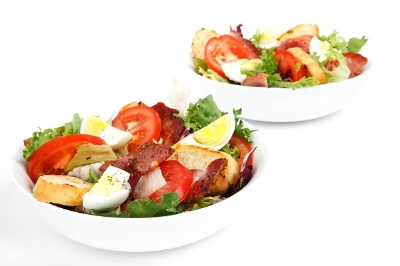
A balanced, healthy diet is one that keeps a person in an optimum state of health while allowing them to carry out their everyday activities as normal. This is why it has to provide the necessary amount of energy so that the body can function correctly; otherwise, symptoms may appear such as tiredness, lack of concentration, irritability, etc.
It is necessary to eat a wide variety of foodstuffs in sufficient amounts in order to cover the necessary intake of carbohydrates (glucides), lipids, proteins, vitamins, minerals and water.
The diet is had to adjust to characteristics of each individual according to the weight, the carving, the complexión, the sex, the degree of physical activity that it carries out and of the fact that present or not some pathology.
7. Nutrients
Nutrients are necessary both for maintaining life and growth, as they provide energy, form structures and regulate the body's metabolic processes. Essential nutrients are those that must be provided through the diet, as the body is unable to synthesise them.
Nutrients you can classify in macro nutrients (proteins, carbon and lipid hydrates), that they are those which give energy to the organisation, and micronutrients (vitamins, minerals and water), that they do not contribute energy but that they have plastic and regulatory functions.
8. Energy
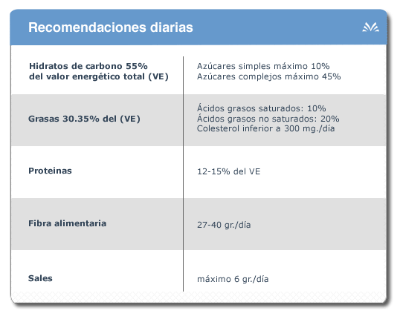
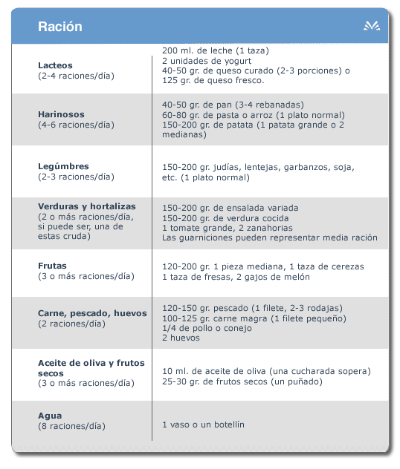
The measure unit of the foodstuffs' energy is the kilocalorie (kcal):
- One gram of carbohydrate provides 4 kcal.
- One gram of protein provides 4 kcal.
- One gram of lipid or fats provides 9 kcal.
- One gram of alcohol provides 7kcal.
Although alcohol is not considered to be a nutrient, it is necessary to take into account the amount of energy that it provides in order to suppress or reduce the intake of alcoholic drinks in specific situations when required.
Recommendations daily.
Portion
A serving is the name given to the amount or portion of a food adjusted to what is considered to be normal for every individual.
9. Food pyramid
Daily recommendations of the pyramid distribute as follows are had:
- 3 daily servings of fruit
- 3 daily servings of vegetables
- 4-6 daily rations of bread, cereals, rice, dough and potatoes
- 2-4 portions of milk, yogurt and cheese
- 3-5 servings of oil (preferably olive oil)
- 2 daily servings of lean meats, fish, eggs, legumes and nuts
- Occasionally meats fats and cold meats
- Occasionally fatty (butter, margarine), industrial and sweet doughs
10. Hypocaloric diet. Recommendations

The hypocaloric allowance has be balanced, with a reduction of the energetic contribution and a nutritional suitable content. Currently, specialists recommend diets that are not very strict. It is advised to reduce 500-600 kcal a day with respect to the previous total intake. Diets with an energy value lower than 1.000 kcal do not guarantee a nutritional balance.
- It is necessary to have a varied, adequate diet that includes all foodstuffs necessary to maintain good health.
- It is recommended to have between 4 and 5 small meals a day to avoid feeling hungry and snacking between meals.
- It is advisable to introduce rich foodstuffs in fibre, as raw, fresh fruit and cereals vegetables integrals (bread, rice, dough,…).
- It is necessary to control the intake of oils and fats, as they have a high kilocalorie content. It is recommended to use virgin olive oil when seasoning and cooking food. Animal fats should be avoided, such as: whole milk, hard cheeses and creamy, butter, margarine, fatty meats, cold meats,…
- The diet has to be varied when it comes to selecting food, menus and recipes, in order to ensure sufficient nutrition and to avoid food monotony.
- Water is the essential drink for our body. It is recommended to drink 8-10 glasses of water every day.
- All alcoholic drinks (came, beer, digs, distillates…) they contain calories, fact that us compels to limit the consumer spending.
- Soft drinks are also rich in calories due to their high sugar content. Yes that is allowed the consumer spending of sodas light.
- It is advised not to use too much fat when cooking and to find alternative cooking methods: steamed, baked, boiled, en papillote, griddle, microwave, non-stick frying pans (as they require little oil to cook).
- It is better to avoid sweet foods like sugar, honey, jam, jelly sweets, ice cream, store-bought cakes, bakery products, etc.
- Artificial sweeteners (saccharine) can be used to sweeten food, as they are not high in calories.
- Dinner should be the lightest meal, with smaller servings and mild cooking techniques. It is necessary not to eat the same food at lunchtime and at dinnertime on the same day.
- It is recommended to eat at the proper time, to chew our food well, sitting down at the table and relaxed.
- It is important to increase our daily physical activity, as it can help us to lose weight.
11. Modifying eating habits

- It is recommended not to do any other activity while eating.
- It is necessary to follow the shopping list that is drawn up at home.
- The shopping list should include food recommended for following a hypocaloric diet.
- Do not go grocery shopping on an empty stomach.
- Read labels and buy food that contains little fat.
- Chew your food slowly, being aware of what you are eating.
- Be relaxed while you eat and sit down at the table. Do not eat standing up.
- Do not eat alone.
- Keep to a set schedule for mealtimes.
- Serve the food first onto the plates and do not put pots on the table; this helps you not to take second helpings.
- If you go off your diet once, that is no excuse for coming off the diet completely.
- Reward weight loss with somthing that is not food.
13. Hypocaloric diet
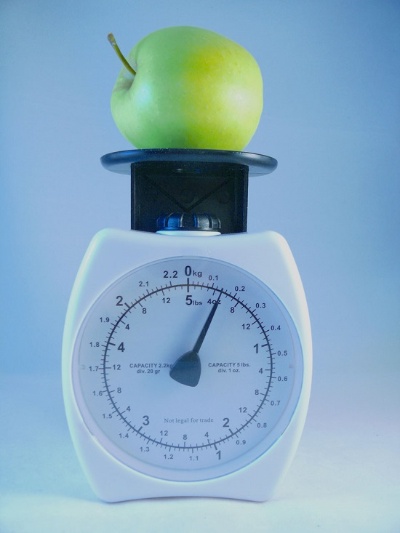
To lose weight is necessary that the contribution of calories is less than the energy consumption, in this way our body begins to consume bookings of fat and we lose weight. Nonetheless, so that this reduced contribution of calories does not cause us a nutritional deficit is essential that the allowance is balanced. We obtain the nutritional balance through a diet:
Low in fat
While we have to control the intake of fat during the diet, our body needs a certain amount of fat. We should include at least 2 soup spoons of oil in our diet every day. It is recommended to reduce animal fats (saturated) and to increase vegetable fats (unsaturated).
Low or free of simple sugars
Simple sugars (sugar, marmalade, candy, cake shop, …) are considered of superfluous consumer spending, for this reason you can delete of the allowance without run the risk of causing a nutritional deficit.
Rich in water
Drink 2 litres of water is necessary to maintain the hydric balance of our body, but if also are following a hypocaloric allowance, to take water us will help to reduce the feeling of hunger (topcoat if we take it between meals). On the other hand, we should avoid drinking alcoholic drinks and soft drinks, as they are very high in calories.
14. Healthy diets. Basic diet plan and examples
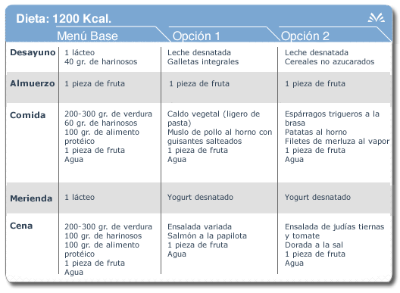
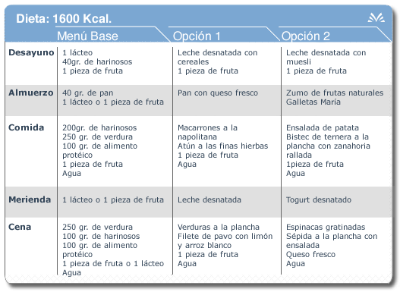
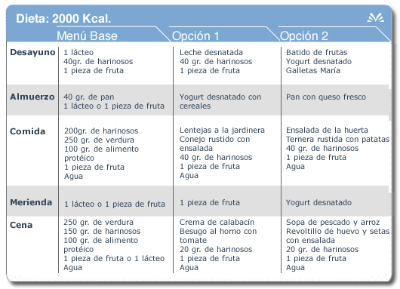
When deciding how many kilocalories we need in our diet, we need to request advice from a nutritionist, as the choice of one diet to another depends on many different variables, such as, among the most important, the level of obesity (according to the BMI), the type of work, whether they practise sport, gender, age, etc.
Below an allowance base is shown (taking into account the dietary pyramid) for 1,200, 1,600 and 2,000 kcal and two examples of menus for each. These allowances are reasoned for healthy people with overweight.
15. General rules
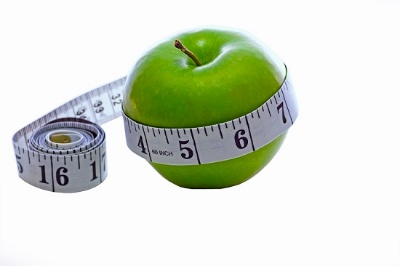
- Regret foodstuffs in crude oil, separating previously waste (bones, skin…).
- Seasonings permitted: vinegar, pepper, lemon juice, garlic, culinary herbs and aromatic spices. It is necessary to limit salt.
- Use artificial sweeteners.
- Use kitchen roll to remove excess fat.
- Choose all-inclusive products (wholewheat bread, brown rice, digestive biscuits, all-inclusive doughs, etc.).
- Eat fish at least three times a week.
16. Remember
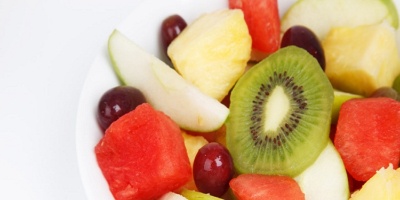
The diet should be slow. Fast diets that promise that you will lose lots of pounds in one week cause health problems in the long term and you end up putting back on the pounds. The healthiest way to lose weight is to lose one or two pounds a week.
Have five meals a day. It is not recommended to skip an important meal. You should have two consistent meals and three light meals every day.
Breakfast should be a consistent meal. The best breakfast provides between 20 and 25% of your daily calories.
It is necessary to have dinner prompt, at least two hours before putting in the bed. At night, your metabolism slows down and food accumulates as fat more easily.
Cook only the bare minimum. Leftovers are a temptation.
Do not use much salt.
Fats contribute many calories, for this reason is recommended to cook to the steam, to the iron or to the oven, etc. In addition, natural cooking is healthier and the vitamins and minerals of the food are retained better.
The to eat pleased to meet you, it is necessary to enjoy eating. The diet does not need to be torture. That is why it is good to vary your menus. A diet that makes you suffer is not a good diet.
Not obsessing with the scales. You should weigh yourself once a week, without your clothes on, before breakfast and preferably at the same time every week.
Chop between meals is not had, because the only thing that is achieved it is to store fats and to throw overland all efforts to fulfill the allowance. If you cannot avoid it, then the best thing is to eat pieces of fruit, skimmed yoghurts or to drink water, as they alleviate the feeling of hunger without being high in calories.
Chew foodstuffs calmly. Eating slowly means that we savour our food more and end up eating less, as eating slowly makes you feel fuller.

